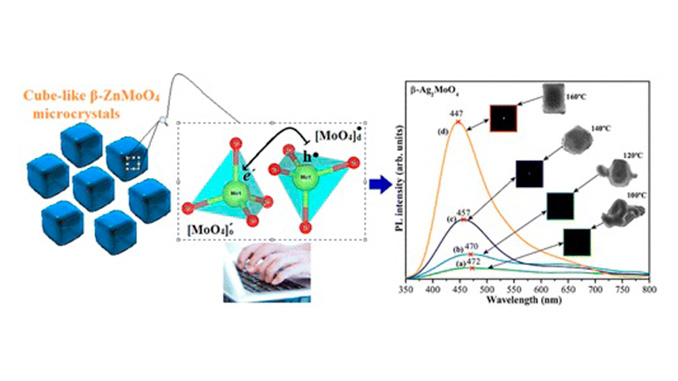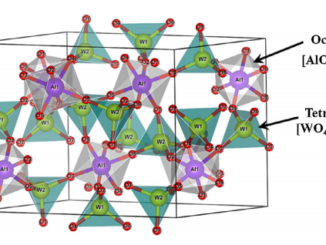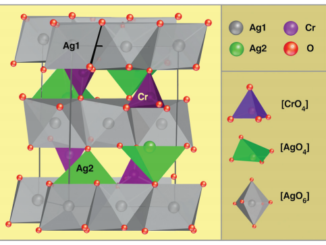
Writers: F. Gouveia, Júlio C. Sczancoski, M. M. Ferrer, A. S. Lima, M. R. M. C. Santos, M. S. Li, R. S. Santos, Elson Longo, Laécio S. Cavalcante
Keywords: Electronic Structure; Photoluminescence Properties; Microcrystals
Abstract: In this paper, we investigate a correlation between theoretical calculations and experimental data to explain the electronic structure and optical properties of silver molybdate (β-Ag2MoO4) microcrystals synthesized by the microwave-assisted hydrothermal method. X-ray diffraction, Rietveld refinement, and micro-Raman spectroscopy confirmed that these microcrystals crystallize in a spinel-type cubic structure. Field-emission scanning electron microscopy images revealed that the processing temperatures influence in the final shape of microcrystals. Optical properties were analyzed by ultraviolet–visible diffuse reflectance spectroscopy; the increase in the optical band gap energy (Egap) (from 3.24 to 3.31 eV) with processing temperature is associated with the reduction of intermediary energy levels. First-principles quantum mechanical calculations based on the density functional theory at the B3LYP level were conducted. The calculated band structure revealed an indirect Egap of approximately 4.00 and 3.34 eV for the β-Ag2MoO4 without and with the formation of defects, respectively. Theoretical calculations based on density of states and electron density maps were employed to understand the polarization phenomenon induced by structural defects in the β-Ag2MoO4 crystals. Finally, photoluminescence properties at room temperature of β-Ag2MoO4 microcrystals were explained by the charge-transfer mechanism involving tetrahedral [MoO4] clusters.




